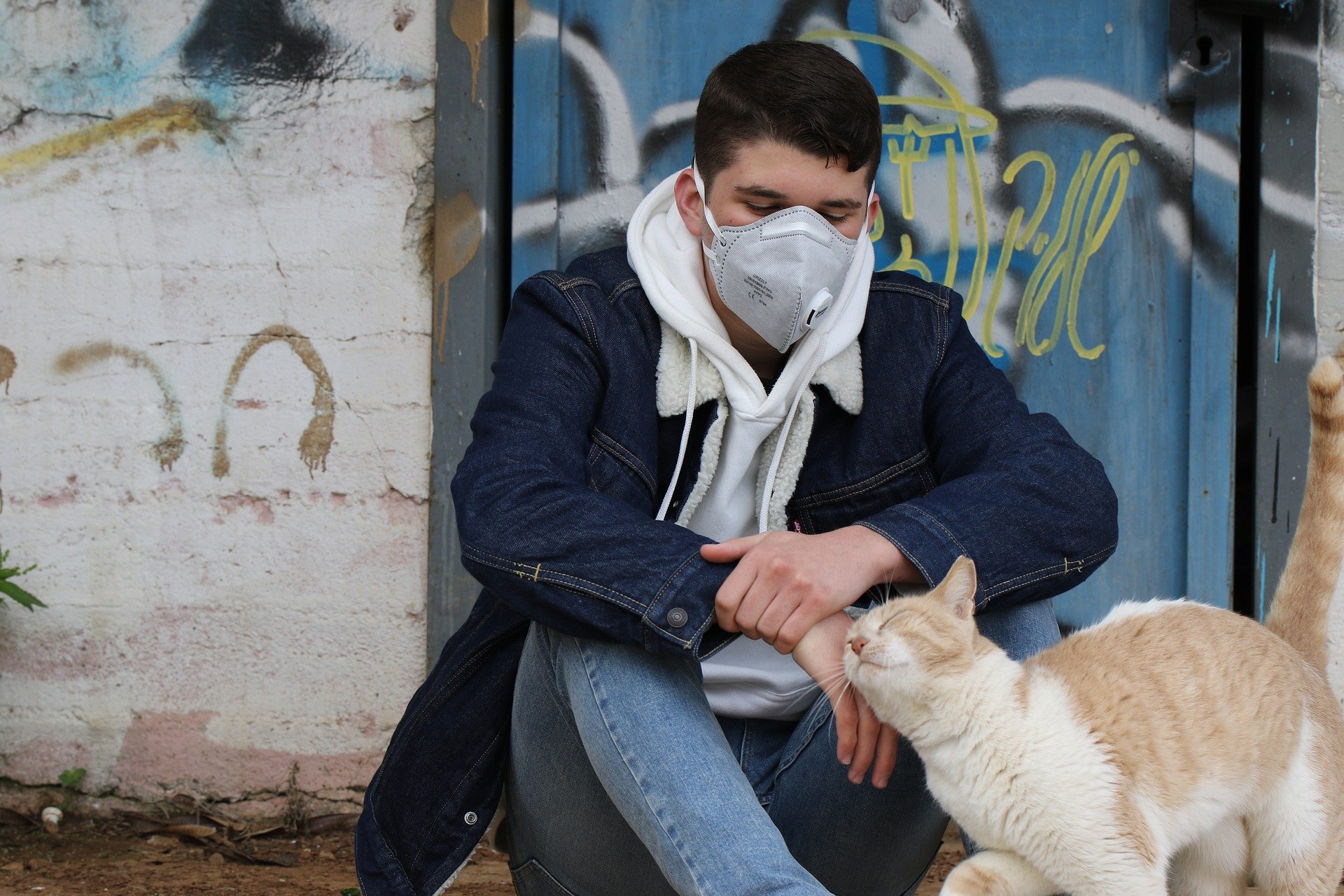The chant in my house when someone goes to leave is, “Stay 6 feet away – no closer than 6 feet.” The message everywhere has been that physical distancing is the only way to defeat this virus and the fear that comes along with it. But we have other ways as well to stay strong and healthy.
Around the end of March, I finished my self-quarantine after just returning from an adventure in India and have been in self-isolation since then. Instead of coming back into the comfortable safety of my home, I came home to a new sense of chaos and uncertainty, and I felt a need to find some good ways to make it through this crisis.
Here are some of the things that are helping me and my family:
- Using technology. For me, especially Facetime on my iPhone.
As a technophobe, I’ve had to adapt to being online for everything, from teaching to giving talks to figuring out live chats. But it’s fine – we need to see people’s faces! Our brains are wired to tune into faces and read the emotional cues written there. The muscles in our face imitate what we see in another’s face and we can feel in our own body what the person we’re talking to shows on their face – visceral connection! By contrast, email is kind of flat and often contains information without emotion. We are social bonding animals, so contact with trusted others is one of, if not our primary, survival strategies in times of danger. - Taking photos and sharing everyday experiences with friends and loved ones.
This includes silly stuff like, “Look how beautiful my new tree is? It just bloomed,” or “Don’t I have the most beautiful dog in the world?” - Humor shifts our perspective.
I like making up silly poems with my granddaughter and sharing by phone message. With my friends we sarcastically share the silly ways that different nationalities might respond to this emergency: Aussies might even decide to cancel the barbie. Canadians might apologize profusely to the virus for wanting to kill it! - Watching examples of groups around the world reaching out to each other and to us all.
Seeing these videos stirs my heart and gives me hope. My current favorites are the Toronto Symphony (separate in their own homes) all playing “Appalachian Spring” and the Rotterdam Orchestra playing Beethoven’s Ode to Joy. Music like this literally moves me and gives me goosebumps. My body seems to mirror the beat and the emotions the musicians move to. It’s tangible togetherness. - Reaching out (safely).
I have an older neighbour who lives alone, and we have let her know that we can offer help and / or distant companionship. Have you noticed that comforting others helps you feel good? Evidence is that helping others gives you a little shot of oxytocin, the feel-good hormone that our brain offers to help us bond with others. It also helps to simply let my friends and colleagues know that I am thinking of them! This is a potent message for us bonding mammals because a sense of secure connection comes from knowing that you exist in someone else’s mind! - Big general things overwhelm us, but specifics we can handle.
If your mind really starts to run round and round on the worry track, you can do what we have learned to help our clients do in therapy: Tie the worry down and get specific.
I’d like to talk more about this strategy of naming a fear specifically to tame it.
Years ago this idea really helped me to realize that I wasn’t afraid of flying – I was afraid of the feeling I get in turbulence. I was in Lima, Peru, in 1991 when there was a serious cholera epidemic, whilst the Shining Path terrorists were killing people in the streets and blowing up buildings. We were there adopting our daughter. Staying inside and safe was not an option.
One thing that really helped me was simply making concrete lists, like the one called “How Not to Get Cholera.” The number one item was, “Always boil every drop of water that comes near you for 12 minutes.” It seems like a simple thing, but this list gave me a way to keep my emotional balance and cope!
And I notice that it helps my therapy clients when they use big abstract labels like “depression” if we can tie their ideas down. For example, when we can change “depression” to, “I am so sad. I have lost my dream,” the overwhelm is much less.
And of course, there’s one more item that belongs on this list:
- If anxiety really takes you over, you can also reach out online to your therapist to talk things over.
There have been times in my life where going to see a therapist, even for a few sessions, has really made a huge difference.
We – the counsellors who are using our EFT model of therapy – are offering online therapy to couples and individuals all over the world. My colleagues and I have found that a therapy session can really help – on-screen and off-screen!
The one thing we haven’t talked about here is being able to turn and find comfort with loved ones. This is maybe the best of all survival strategies in dark times. I will talk about that in my next blog.
If you want to know more about my thoughts on how COVID-19 is affecting our relationships, watch the replay of my live chat, “Love in the Time of Corona.”
To learn when I’m going to go live and off-the-cuff again, click here to subscribe!

